Range Hood Mounting Height Comprehensive Guide
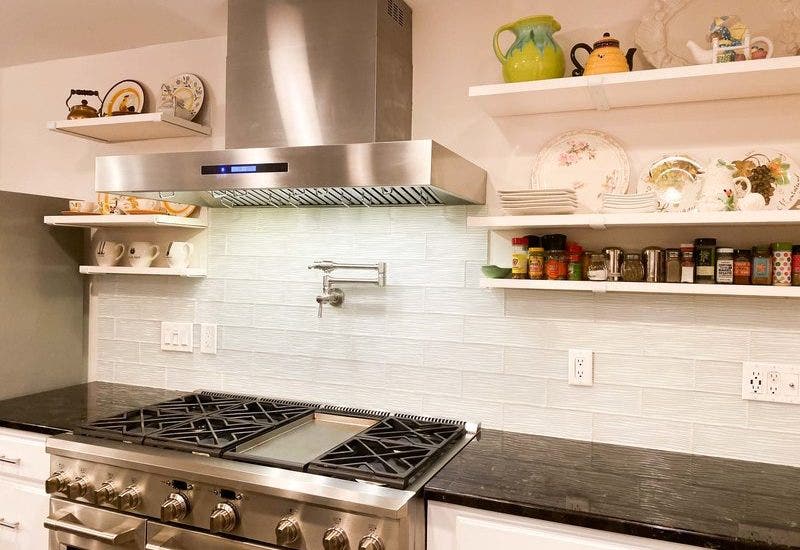
Mount your indoor range hood between 28 and 36 inches from the cooktop and your outdoor range hood between 36 and 42 inches away from the cooktop for maximum effectiveness.
One of the most common questions we get at Proline Range Hoods from homeowners and contractors is: how high should I mount my (or my client’s) range hood?
Range hood height differs for indoor and outdoor hoods.
It’s incredibly important to get this height accurate. The optimal range hood height improves the hood’s efficiency and longevity. But if it’s too close or too far to the cooktop, this can have a detrimental effect on performance and durability.
Also, range hoods aren’t exactly easy to move after they are installed, so once it’s installed, you’re stuck with that height.
We’re here to make sure that you install it at the perfect distance from your cooktop.
Before we begin, remember…
Table of Contents
Range hood height does not depend on fan size.
Range hoods of all sizes must be mounted either between 28 and 36 inches above the cooktop for indoor hoods or 36 to 42 inches above the cooktop for outdoor hoods.
Kitchen hood height does not depend on how tall your range hood is.
Along with size, range hood mounting height does not affect the installation height.
Indoor hoods and outdoor hoods, though, have different installation heights, which we’ll discuss below.
Standard Range Hood Height
The standard height for a range hood is between 28 and 36 inches from the cooktop for a gas range and electric range. 28 inches is the minimum height. If the hood is any closer, it may become damaged. Any further than 36 inches and your hood won’t move air away from your cooktop efficiently. This applies to wall mount range hoods, island range hoods, and range hood inserts.
Most range hood manufacturers recommend mounting your range hood between 20 and 24 inches above your kitchen range, but we recommend at least 28 inches for our professional-quality, powerful vent hoods.
How high should an indoor range hood be from the stove?
Indoor range hoods should be mounted between 28 and 36 inches from your cooktop.
How high should an outdoor range hood be from the stove?
Outdoor range hoods should be mounted between 36 and 42 inches from your cooktop. The extra distance is needed due to the intense heat of outdoor grills.
What happens if I mount my hood too close to my cooktop?
Your hood may become damaged.
Ranges produce a lot of heat. That heat may damage the outside of your stainless steel range hood and the circuitry on the inside of the hood. If exposed to intense heat for too long, this damage may be irreparable.
If you mount your hood too close to the cooktop, be extra cautious about what you are cooking and how often you are cooking.
You may start a fire.
If your hood is too close to your cooktop, the intense heat may start a fire in your kitchen, which may damage your range, cabinetry, and other surrounding areas. This could be a big hit to your finances because you would need to replace your hood and repair the surrounding damage in their kitchen.
You will have to clean your vent hood more frequently.
Your vent hood will be closer to the cooking surface which means that the grease and dirt from your cooking will stick to surrounding surfaces. You’ll need to clean the stainless steel outside of your hood more frequently, probably every couple of weeks as opposed to monthly.
The longevity of your motor is reduced.
A hood too close to the cooktop puts a lot of strain on the blower and other internal components. All of the intense heat and fumes need to be filtered out very quickly, which can cause your motor to become overworked.
What is the maximum height for a range hood?
The maximum height for a range hood is 36 inches for indoor hoods and 42 inches for outdoor hoods.
Should a range hood be flush to the front of the stove?
Yes, for the best coverage and most efficient ventilation, your range hood should be flush to the front of your stove. It should extend at least to the middle of your front burners.
What happens if I mount my hood too far from my cooktop?
Some of the unwanted air in your kitchen will escape into your cooking space.
Chances are high that you will turn your vent hood on and, as you continue to cook, you’ll notice smoke accumulating in the room. Over a long period of time, grease may begin to appear on surrounding cooking surfaces like your walls and ceiling.
This is because some cooking fumes will escape into your kitchen rather than travel through your ductwork and outside your home. This is not good at all! In fact, it defeats the purpose of having a functional vent hood. Then it’s just in your kitchen for looks.
The “effective capture area” does not span the entire distance between your range and your range hood.
The effective capture area is the area that surrounds your fan where it captures all the grease, dirt, and other cooking fumes efficiently.
Check out our diagram of the effective capture area below. The gray shaded section is the capture area, where, as the name suggests, unwanted air is captured and funneled through your ductwork.
But here’s the key:
If your hood is mounted too far away from the cooktop, the extra few inches that the air has to travel are not within this effective capture area. The additional distance drastically decreases the hood’s efficiency, which is why the appropriate height is so crucial.
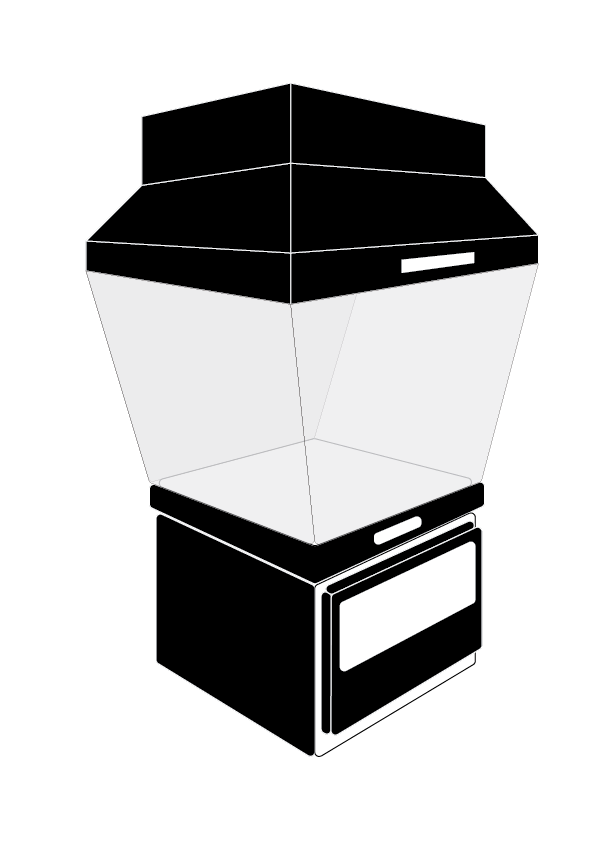
You will find yourself using the higher speeds often, reducing the life of your motor.
Because unwanted air escapes, you may turn your hood on higher speeds to compensate. If you run it at maximum speed all the time, it will wear down.
The heated and cooled air may leave your home, costing you money unnecessarily.
Another consequence of using the higher speeds too often is that you may remove heated or cooled air from your kitchen. As a result, you’ll have to turn your heater or air conditioning back on to cool/heat more air in your home.
You can solve this problem and save your money by initially mounting your hood at the right height. This will allow you to run it at lower speeds and pull just the right amount of air out of your home.
You may require makeup air.
Another consequence of running your hood on max speed often is that you may require makeup air. When you turn it to max, although it may filter all of the unwanted contaminants from your cooking out of your kitchen, that air has to go somewhere.
If your hood is on for long enough, shortness of breath may occur. The air that leaves your kitchen is not being replaced at a fast enough rate, which is a sign you need a makeup air kit.
Before you invest in makeup air, though, try simply opening a door or cracking a window to improve the ventilation in your kitchen.
Where do you mount a vent hood?
Now that you know the optimal installation height, you may be wondering: where do I mount my vent hood? It should go without saying that it is mounted above a stove.
But there are three places in your kitchen that a vent hood could be mounted: on your wall, over your kitchen island, and under your kitchen cabinets.
Wall and under cabinet hoods typically vent horizontally or vertically, while islands are always vented through your ceiling.
How do you mount a wall range hood?
Most range hoods come with mounting brackets and these are easy to mount. Just fasten screws through the holes in the bracket and leave about ¼” of space. This is where your hood will rest.
Take a look at the simplified process on how to mount your wall range hood.
Note: You can find all of the following information in our installation guide here.
- Pre-drill two holes where you want to mount your new range hood.
- Insert wall anchors into the wall.
- Drill two screws into the wall anchors. Leave about a quarter-inch of space so that your hood can rest on the screws.
- See Step 3 below for further details.
But, attaching your hood is step three of our installation process. If you’re just getting started with the install, there are a couple of steps for you to take before you hang it. Here are our detailed instructions on how to install your wall range hood.
Note: Before you do any installation, make sure to gather the following materials:
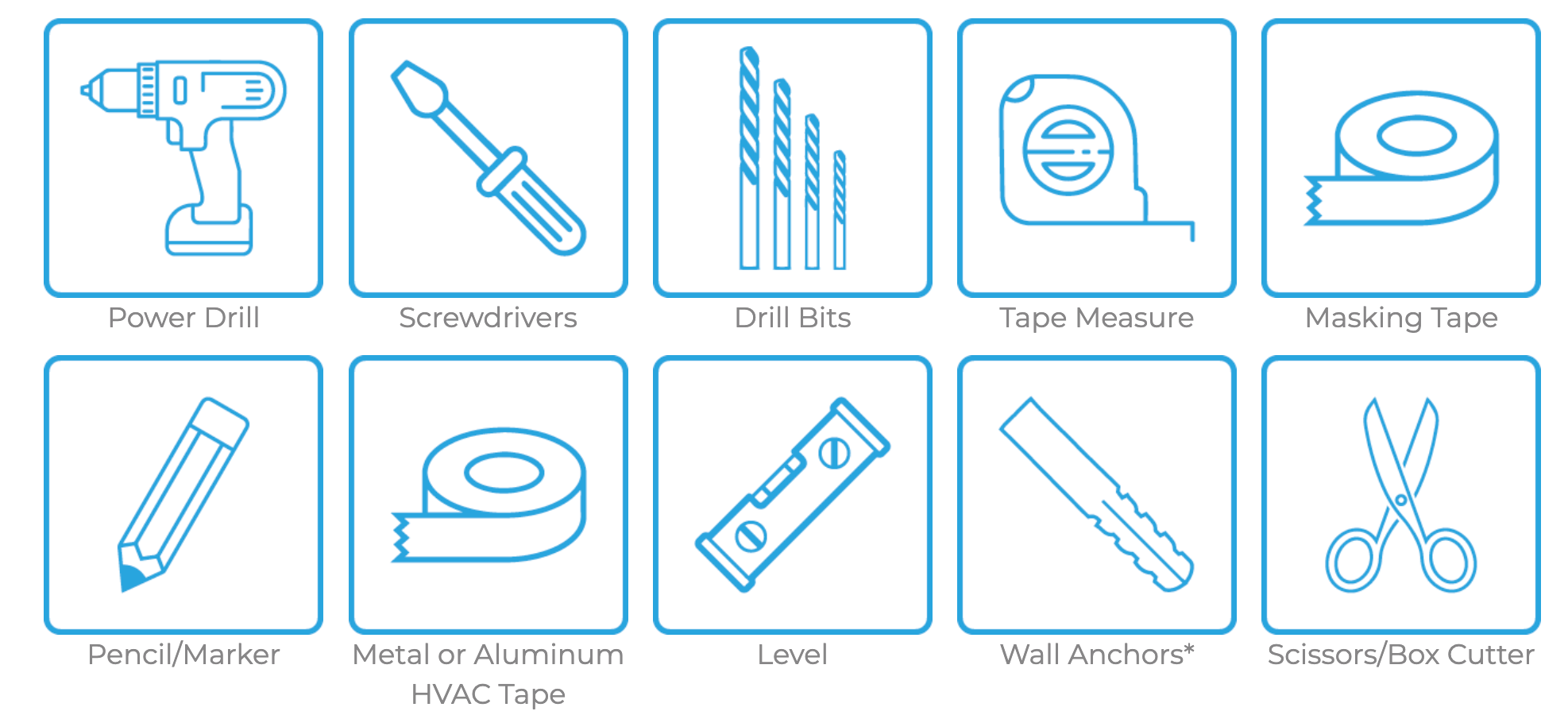
Step 1- Make some measurements
Tracing the outline of your hood and finding the mounting holes will help get your range hood exactly where you want it to go.
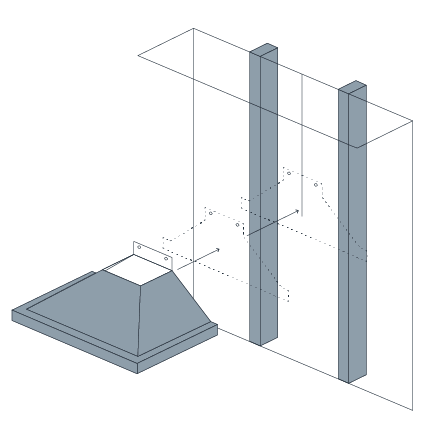
Step 2- Install your chimney bracket
The chimney brackets attach to your chimney. Insert wall anchors and screw the bracket into place. By doing this the chimney will then mount to the bracket.
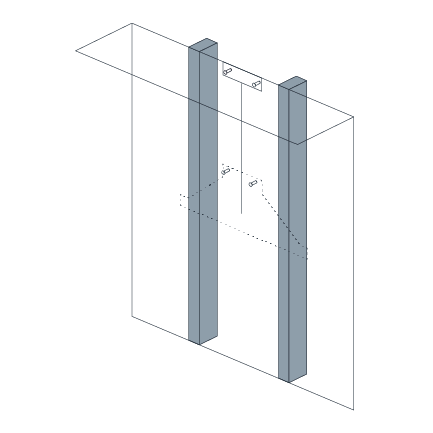
Step 3 – Mount your range hood and connect the ductwork.
- Hang the hood on the mounting screws and tighten them to secure the hood in place. The bottom should align with the marked horizontal line.
- Drill holes in the back of the hood aligned with the marked wall stud locations.
- Use the included screws to secure the hood firmly to the wall studs.
- Connect the ductwork to the hood’s blower and tape it securely in place.
- Power on the hood by plugging it in or wiring it directly to a power source.
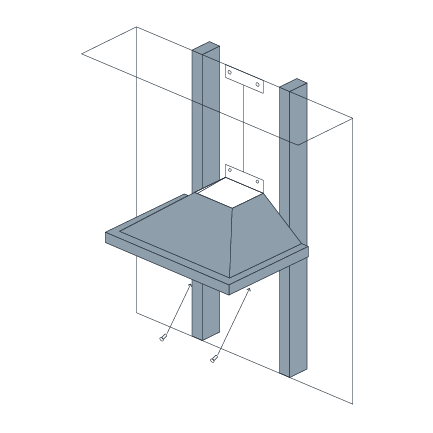
Step 4- Install your chimney
- Remove the protective film coating from the chimney pieces.
- Position the two chimney pieces on top of the range hood, ensuring that the vent in the upper section is at the top and the upper section goes inside the lower section.
- Attach the top section of the chimney to the mounting bracket, ensuring that the bottom section securely rests on top of the hood.
- If there are mounting holes available, screw the base of the chimney to the top of the hood.
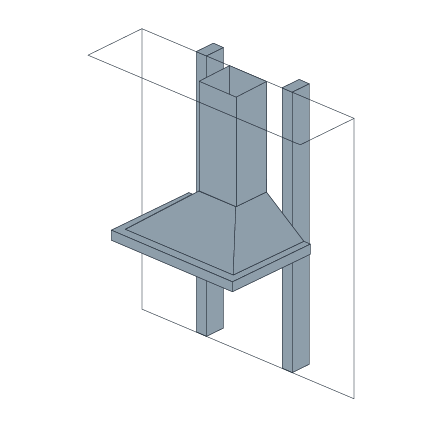
How do you mount an under cabinet hood?
Mounting your under cabinet hood is very similar to mounting your wall hood. Here’s what you will need:
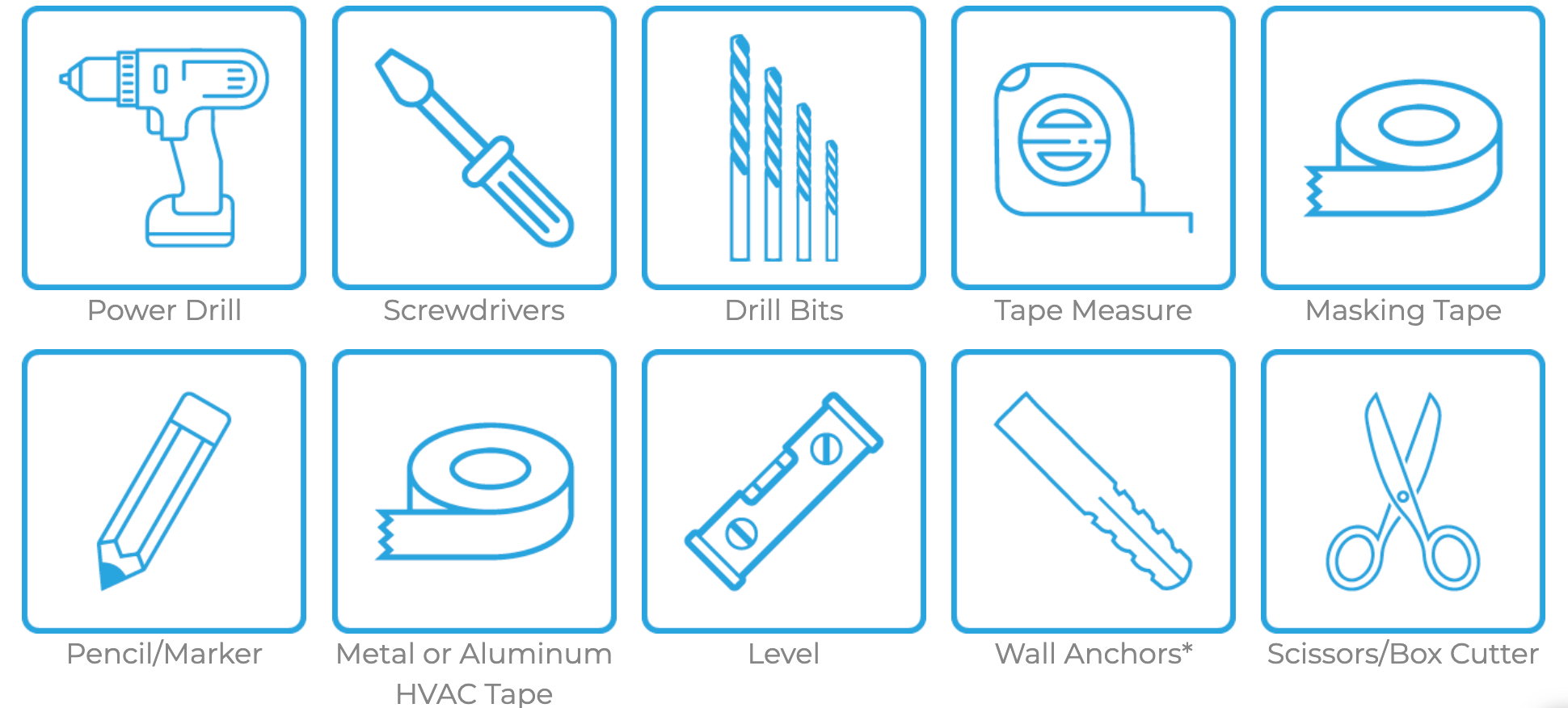
Step 1- Make some measurements
Similarly to mounting a wall hood, you will need to make some measurements to decide where you would like your under cabinet hood.
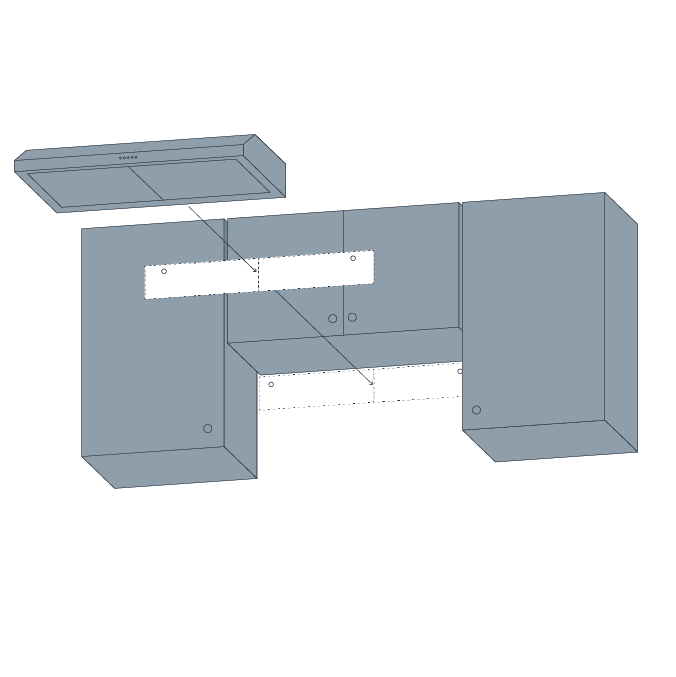
Step 2 – Hang the hood on the mounting screws
Support your under cabinet range hood by drilling into studs in the back of it.
If the slots in the back of the range hood do not match up with the studs, you can drill through the back of your range hood.
Your ductwork can be taped to the top of the range hood using airtight aluminum tape. If you’re unsure about what size duct you need, check out our article on range hood duct sizes.
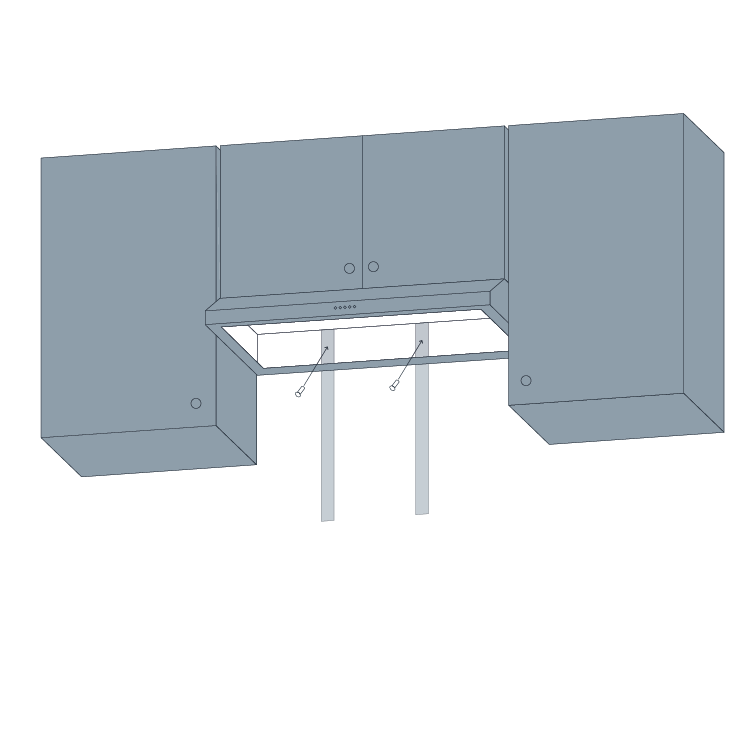
How do you mount an island range hood?
Mounting your island range hood is different than walls and under cabinets. Since this hood is free-standing above an island, you need to make several marks on the ceiling and ensure that it is supported with extra support brackets.
Before you do anything, gather the right materials!
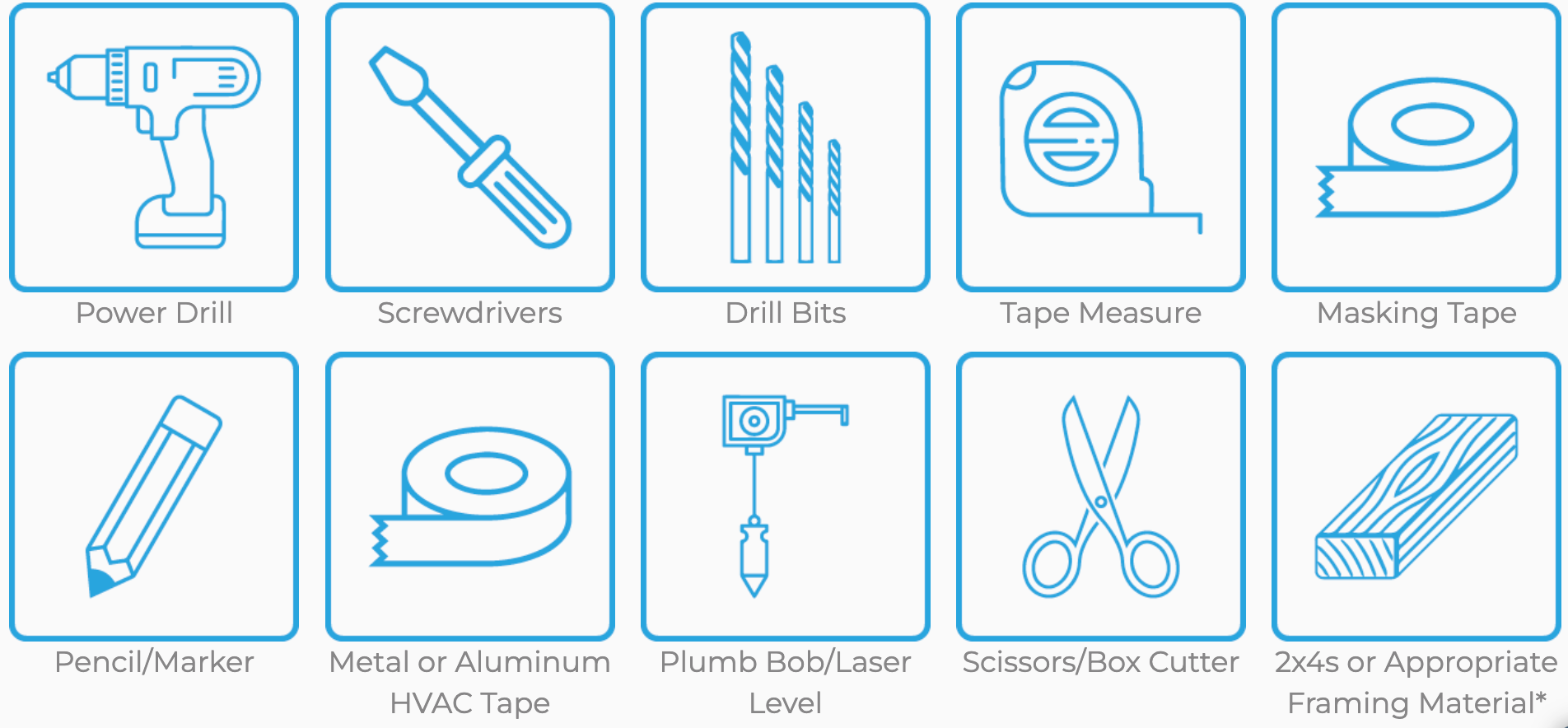
Because you need more support for an island hood compared to a wall or under cabinet hood, there are four steps to take before you can hang it.
Step 1- Make some measurements
Take measurements and find a place where you want to mount your hood that is supported by joists. But this time you’ll be making marks on your ceiling, so be sure to grab a ladder.
The first two things you’ll do are:
- Locate two ceiling joists and mark them with a pencil or marker on your ceiling. Your ceiling bracket will mount to these joists.
- Draw a square in the center of the installation area on your ceiling. A laser level works great to find this exact center area. The size of the installation area depends on the size of your ductwork.
Note: You need some room to install your ceiling brackets, though, so don’t mark your installation area too close to the ductwork.
Leave at least a few inches of space between the installation area markings and your ductwork (You’ll trace the ductwork out near the end of Step 1).
Higher-CFM range hoods require larger ductwork. In addition, since island range hoods are exposed to your kitchen air on all sides, they require more CFM than walls or undercabinets to keep all the unwanted air outside your home.
In some cases, the ductwork size depends on the model. You can find the duct size for every model on Proline’s product pages. If you have any questions, call us at (877) 901-5530.
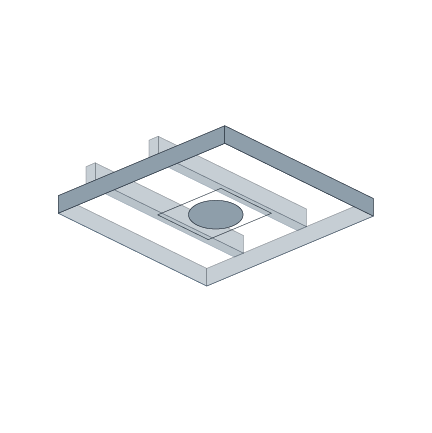
Step 2 – Install your ceiling brackets
Installing your ceiling brackets will include drilling holes through ceiling joists or added framing, cutting a hole in the ceiling for the duct, and placing a chimney bracket and screwing it into place.
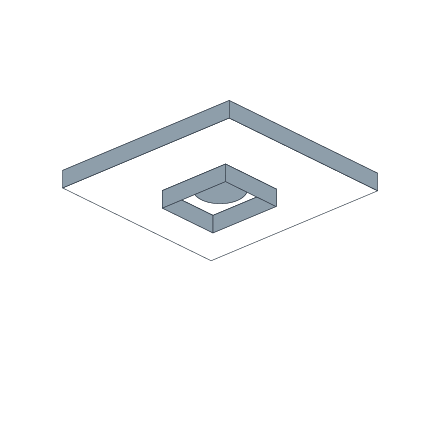
Step 3 – Install Support brackets
- Insert vertical brackets into the four corners of the ceiling bracket.
- Extend the brackets to the desired length, ensuring that the bottom of the hood is positioned between 28″ to 36″ above the cooktop.
- Securely screw all the support brackets to the ceiling mounting bracket, ensuring they are tightened completely
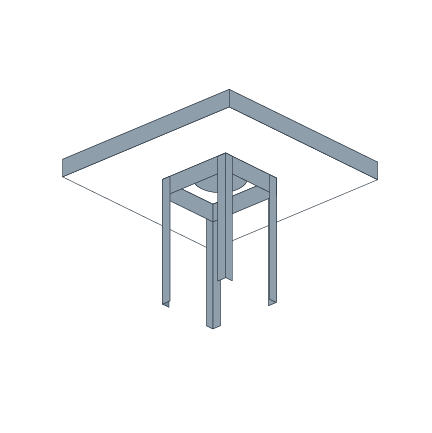
Step 4 – Install your chimney!
Since an island hood is free-standing, the chimney needs to be installed before it is mounted, unlike wall and under cabinet range hoods. This is part of the reason that the ceiling bracket and support brackets are so important. They keep the chimney firmly in place.
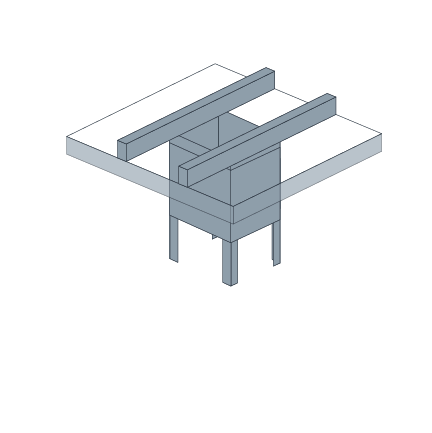
Step 5 – Mount your range hood
Now you can mount your island range hood. Island range hoods do not mount using a bracket. Instead, they fasten into the supporting bracket. Here’s how:
- Set your hood directly under the chimney you installed in step 4.
- Screw it into all four supporting brackets.
- Slide the telescoping chimney down until it meets the top of your range hood.
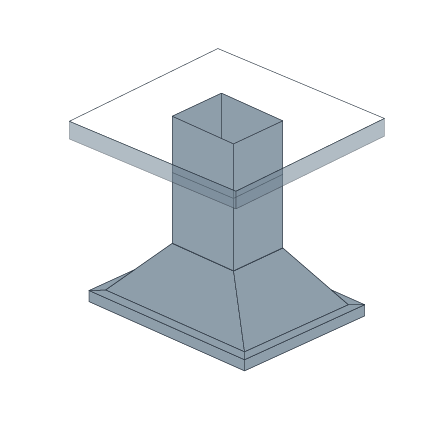
How do I mount a hood without a mounting bracket?
Some of our range hoods do not come with a bracket. This is not a problem.
All you need to do is drill through the back of your range hood into studs in your wall.
If you struggle to find studs, check out the video below.
For extra support, you can use drywall screws. These aren’t required, but if you can’t find a stud, this is definitely the way to go.
If you have any questions about mounting or installation, refer to the videos below.
How to Install a Ductless Range Hood
How to Install a Wall Mounted Range Hood
How to Install an Island Range Hood
How to Install an Under Cabinet Range Hood
Note: We no longer sell the PLFW 115 and 116, but the installation process is very similar to our current under cabinet models.
How to Install a Range Hood Insert
Range hood inserts aren’t technically mounted to your wall, but rather set in place inside your custom cabinetry. Installing your insert involves a quick four-step process; check it out here.
If your hood is now mounted and installed, congratulations! If not, feel free to call us at (877) 901-5530. Our customer service team is happy to assist you.
Related Articles
Range Hood Size Definitive Guide
How many CFM do I need for my range hood?
How high should an indoor range hood be from the stove?
Indoor range hoods should be mounted between 28 and 36 inches from your cooktop.
How high should an outdoor range hood be from the stove?
Outdoor range hoods should be mounted between 36 and 42 inches from your cooktop.
Where do you mount a vent hood?
Now that you know the optimal installation height, you may be wondering: where do I mount my vent hood? It should go without saying that it is mounted above a stove.
But there are three places in your kitchen that a vent hood could be mounted: on your wall, over your kitchen island, and under your kitchen cabinets.
Wall and under cabinet models typically vent horizontally or vertically, while islands are always vented through your ceiling.
How do I mount a hood without a mounting bracket?
All you need to do is drill through the back of your range hood into studs in your wall.
Should a range hood be flush to the front of the stove?
Yes, for the best coverage and most efficient ventilation, your range hood should be flush to the front of your stove. It should extend at least to the middle of your front burners.



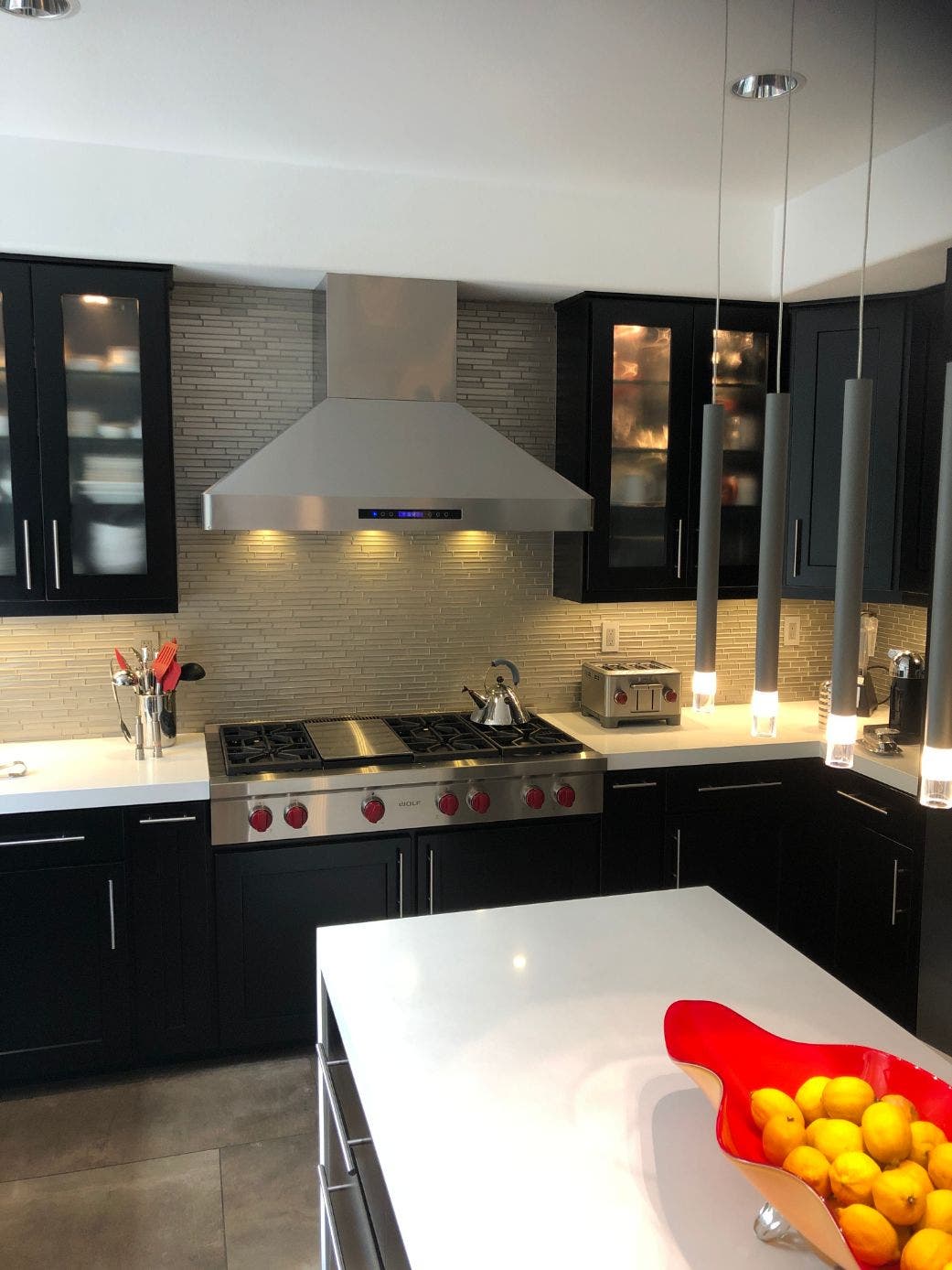
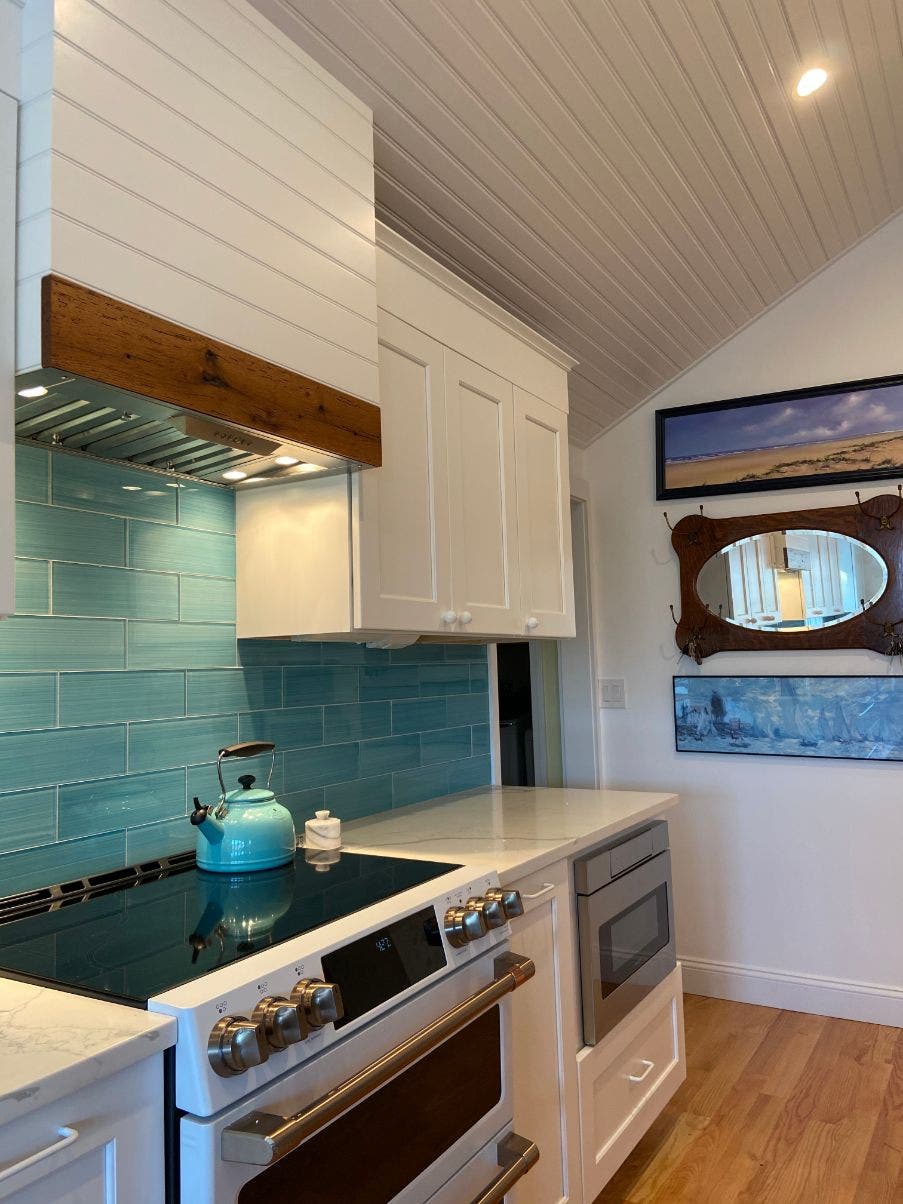

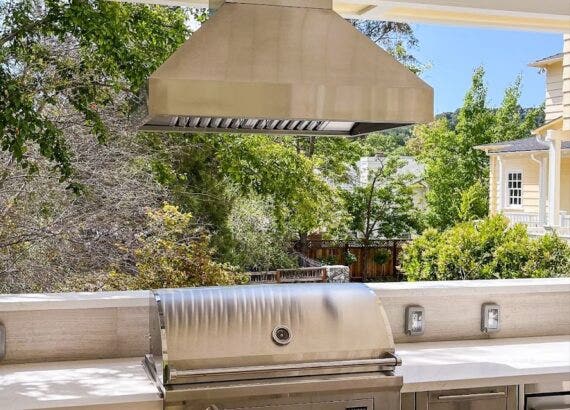
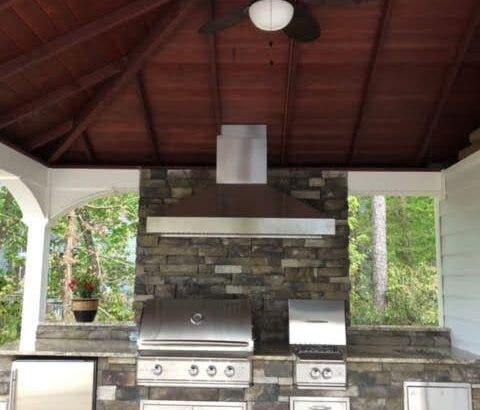
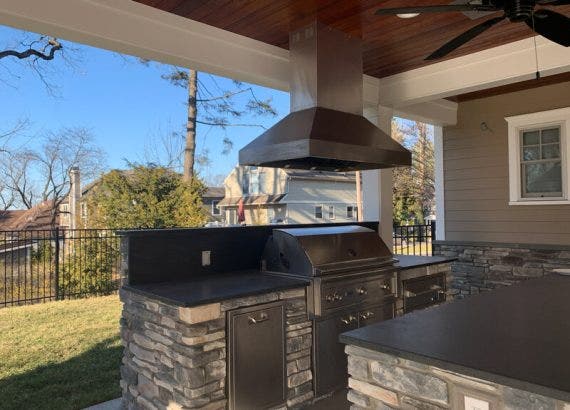
Comments are closed.